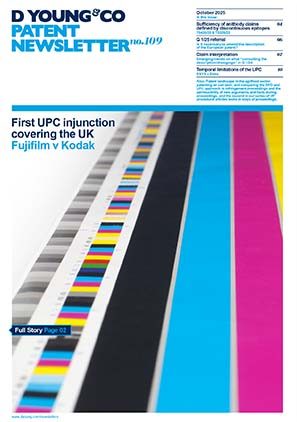Copyright in functional shapes: a ride in the right direction?
The Court of Justice of the European Union (CJEU) handed down its decision in the much-anticipated Brompton Bicycle case, confirming that copyright can subsist in functional shapes but the design must be original – the subject matter must reflect the personality of its author, as an expression of their free and creative choices.
Background
Brompton Bicycles were originally created in 1975 and have been sold in their current form since 1987. The iconic folding bicycle design enables three different positions; folded; unfolded; and "stand-by". The latter enables the bike to stay balanced on the ground. Brompton Bicycles previously held a patent for this invention, but it had since expired. In recent years, Get2Get began marketing its own foldable bicycle, which bears a striking resemblance to the Brompton.
Brompton brought a claim for copyright infringement in Belgium against Get2Get. In response, Get2Get argued that the bicycle could not be protected by copyright because its appearance was dictated by its technical function. The Belgium court sought guidance from the CJEU on the following points:
- Are shapes necessary to achieve a technical result excluded from copyright protection?
- When assessing whether a shape is necessary to achieve a technical result, is the court required to consider:
- the existence of other possible shapes;
- the effectiveness of the shape in achieving the result;
- the intention of the infringer to achieve the result; and
- the existence of an earlier patent right?
The CJEU’s decision
The CJEU reiterated its decision in Cofemel - the only requirements for copyright protection are originality of the work in the sense that it is the author's own intellectual creation; and that the author's creation is expressed.
If originality is satisfied, the CJEU held that the subject matter is eligible for copyright protection, "even if its realisation has been dictated by technical considerations, provided that its being so dictated has not prevented the author from reflecting his personality in that subject matter, as an expression of free and creative choices." Where there is no creative freedom in the development of the design, copyright will not apply.
The CJEU stated that the existence of other possible shapes which can achieve the same technical result is not decisive. The intention of the alleged infringer is also irrelevant. The existence of an earlier patent, and the effectiveness of the shape in achieving the technical result, are only relevant to the extent that they help to determine why the author chose the shape that they did.
In this case, the CJEU noted that the shape of the Brompton appears necessary to obtain the technical result of folding the bike into three positions. The referring court will now have to determine whether, in spite of this, the Brompton is an original work, resulting from the author’s expression of free and creative choices.
Implications in the UK
This decision will have an important impact in the design sector. A much wider range of works could potentially be enforced as copyright works in light of both Cofemel and Brompton. Copyright protection is one of the longest lasting IP rights, making it an attractive option, particularly where other rights, for example registered designs or patent rights, have expired. However, it remains to be seen how the UK courts will apply these cases, particularly in the context of Brexit. The interplay between designs and copyright may be one of the first areas in which we see divergence between the UK and EU.
Case details at a glance
Jurisdiction: European Union
Decision level: CJEU
Parties: Brompton Bicycle Ltd v Chedech/Get2Get
Date: 11 June 2020
Citation: C-833/18

